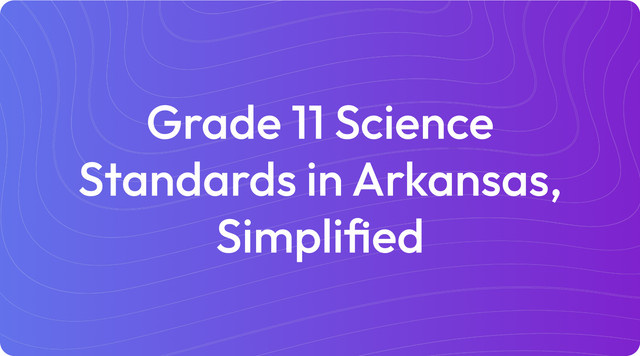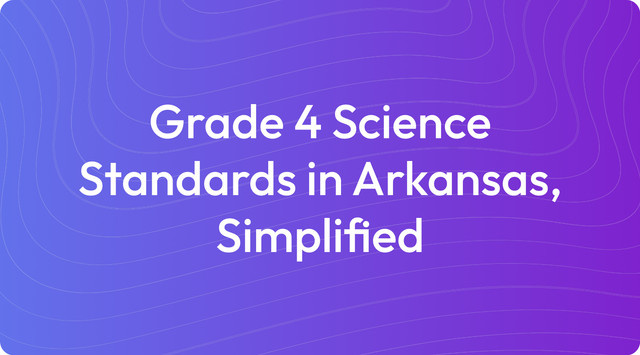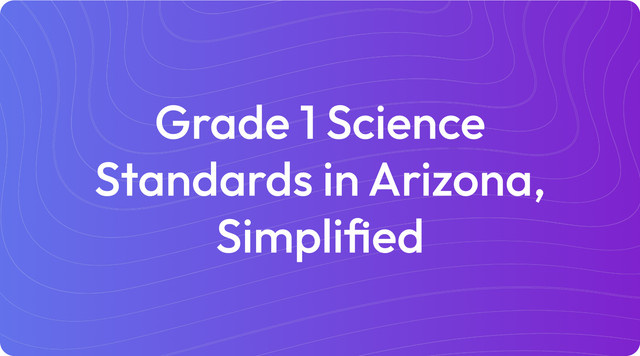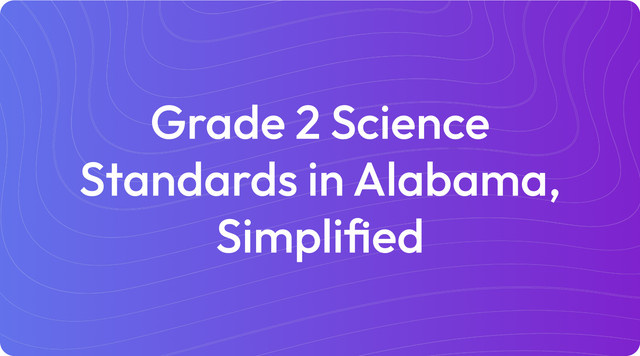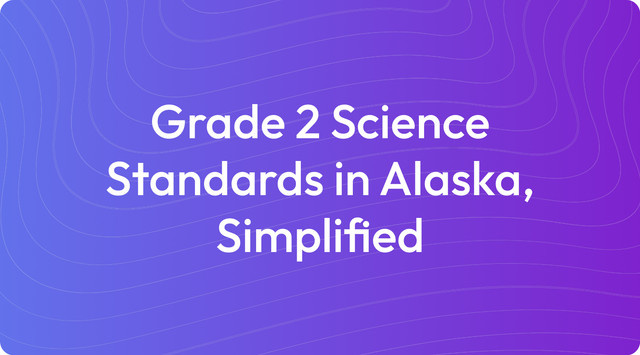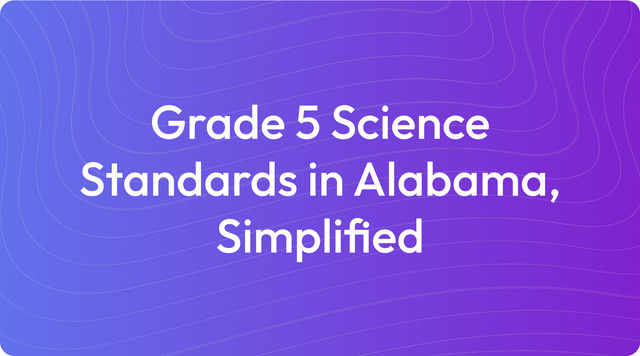Grade 6 Science Standards in California, Simplified
Grade 6 science in California: study Earth, weather, and ecosystems easily. See the standards—read more on TeachShare!
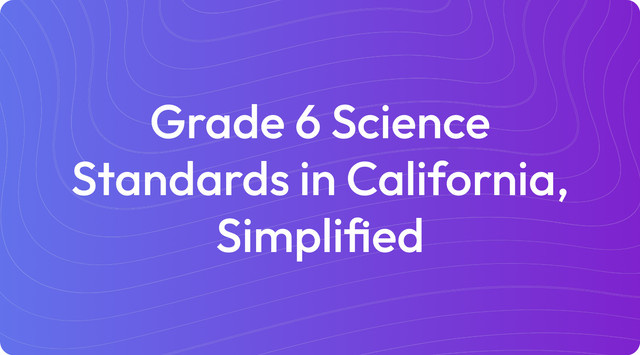
We understand that working with state standards is a core part of curriculum planning. They provide the framework for what students need to learn, but translating them into daily instruction requires careful thought. Our goal is to offer resources that help you connect these standards to practical, engaging activities for your students.
Education standards are a set of learning goals that outline what students should know and be able to do at each grade level. For teachers, they provide clear benchmarks for student progress without prescribing specific teaching methods, offering flexibility in lesson design. For instance, the Grade 6 Science Standards in California define key concepts in Earth, physical, and life sciences, guiding instruction toward hands-on investigation and critical thinking.
What Are Grade 6 Science Standards in California?
The Grade 6 Science Standards in California are built on the California Next Generation Science Standards (CA NGSS). They are designed to help students explore Earth, physical, and life sciences using a three-dimensional learning approach that combines core ideas, scientific practices, and crosscutting concepts.
Key Areas of Grade 6 Science Standards in California:
Earth Science: Earth’s Systems and Resources
- ESS2: Earth’s Systems
- Develop a model to describe the cycling of Earth’s materials and the flow of energy that drives this process (e.g., rock cycle)
- Construct an explanation based on evidence for how geoscience processes (e.g., erosion, plate tectonics) have shaped Earth’s surface over time
- Collect data to provide evidence for how the movement of water through Earth’s systems affects weathering and erosion
- ESS3: Earth and Human Activity
- Construct a scientific explanation based on evidence for how natural resources are distributed unevenly across the planet
- Design a method for monitoring and minimizing human impact on the environment
- ESS2: Earth’s Systems
Physical Science: Matter and Energy
- PS1: Matter and Its Interactions
- Develop models to describe the atomic composition of simple molecules and extended structures
- Analyze and interpret data on the properties of substances before and after they interact to determine if a chemical reaction occurred
- Develop a model to describe how thermal energy causes particles to move and change states (e.g., solid to liquid)
- PS1: Matter and Its Interactions
Life Science: Ecosystems
- LS1: From Molecules to Organisms
- Develop a model to describe how food is rearranged through chemical reactions during cellular respiration
- LS2: Ecosystems: Interactions, Energy, and Dynamics
- Analyze data to provide evidence for the effects of resource availability on organisms in an ecosystem
- Develop a model to describe the cycling of matter and the flow of energy among living and nonliving parts of an ecosystem
- LS1: From Molecules to Organisms
Engineering, Technology, and Applications of Science (ETS): Problem-Solving
- ETS1: Engineering Design
- Define the criteria and constraints of a design problem involving human impact on Earth, and evaluate possible solutions
- Develop a model to generate data for testing and modifying a solution to a problem
- ETS1: Engineering Design
Key Crosscutting Concepts (CCCs) for Grade 6 Science:
- Cause and Effect: Understanding how processes like erosion or chemical reactions cause observable changes
- Energy and Matter: Exploring how matter and energy cycle through Earth’s systems and ecosystems
- Systems and Models: Using models to represent complex systems, such as the water cycle or ecosystems
The framework for these standards is guided by the California content standards and the topic arrangements of the Next Generation Science Standards.
Key Tested Standards
The Grade 6 Science Standards in California, aligned with the California Next Generation Science Standards (CA NGSS), emphasize hands-on learning, critical thinking, and systems thinking. For teachers, this means assessments will likely focus on a student's ability to apply knowledge through investigation and modeling, not just rote memorization. The key tested standards focus on four main units: Earth Science, Physical Science, Life Science, and Engineering Design.
Below are the key tested standards likely to be assessed:
1. Earth Science: Earth’s Systems and Human Impact
- MS-ESS2-1: Rock Cycle and Energy Flow
- Develop a model to describe the cycling of Earth materials (e.g., rocks, soil) and the flow of energy that drives the process.
- MS-ESS2-2: Shaping Earth's Surface
- Construct an explanation for how geoscience processes (e.g., erosion, plate tectonics) have changed Earth’s surface over time.
- MS-ESS2-5: Water and Erosion
- Collect data to provide evidence for how water movement affects weathering, erosion, and deposition.
- MS-ESS3-1: Natural Resources Distribution
- Construct a scientific explanation for how the uneven distribution of natural resources (e.g., minerals, water, soil) is related to geoscience processes.
- MS-ESS3-4: Human Impact and Conservation
- Design a solution to monitor and minimize human impact on the environment.
2. Physical Science: Matter and Energy
- MS-PS1-1: Atomic Composition of Molecules
- Develop models to describe the atomic composition of simple molecules and extended structures.
- MS-PS1-2: Chemical Reactions
- Analyze and interpret data on the properties of substances before and after they interact to determine if a chemical reaction occurred.
- MS-PS1-4: Thermal Energy and States of Matter
- Develop a model to describe how adding or removing thermal energy affects particle motion and state changes (e.g., melting, freezing).
3. Life Science: Energy and Matter in Ecosystems
- MS-LS1-7: Cellular Respiration
- Develop a model to describe how food is rearranged through chemical reactions to release energy for organisms.
- MS-LS2-1: Resource Availability in Ecosystems
- Analyze data to provide evidence of how the availability of resources (e.g., food, water, space) affects the populations of organisms.
- MS-LS2-3: Matter and Energy in Ecosystems
- Develop a model to describe the cycling of matter and flow of energy among living and nonliving parts of an ecosystem.
4. Engineering, Technology, and Applications of Science (ETS): Problem-Solving
- MS-ETS1-1: Define a Problem
- Define a design problem, including criteria for success and constraints, to address human impact on Earth.
- MS-ETS1-4: Testing and Improving Solutions
- Develop and test models to generate data for improving a solution.
Sources: nextgenscience.org, cde.ca.gov.
Example Learning Objectives for Unit Planning
Learning objectives are clear, student-friendly statements that describe what students will be able to do by the end of a lesson. They help focus instruction and give students a clear target for their learning, translating broad standards into specific, measurable outcomes.
To illustrate, here are examples of learning objectives for two Grade 6 Science standards in California. These are written as student-friendly “I can” statements and are aligned with the NGSS three-dimensional learning approach:
Standard: MS-ESS2-1
Develop a model to describe the cycling of Earth’s materials and the flow of energy that drives this process.
- I can explain how energy from the Earth’s interior and the Sun drives processes like the rock cycle.
- I can create a model (e.g., diagram, physical model) to show how rocks change through melting, cooling, weathering, and compression.
- I can describe how the movement of energy causes materials to change from one form of rock to another (e.g., sedimentary to metamorphic).
- I can use my model to explain how Earth’s materials are recycled over time.
Standard: MS-LS2-3
Develop a model to describe the cycling of matter and flow of energy among living and nonliving parts of an ecosystem.
- I can identify the roles of producers, consumers, and decomposers in an ecosystem.
- I can create a model (e.g., food web or diagram) to show how energy flows from the Sun to plants and then to animals.
- I can explain how matter cycles through ecosystems, including how decomposers recycle nutrients into the soil.
- I can use my model to describe how energy moves in one direction while matter cycles between living and nonliving parts of an ecosystem.
Key Changes & Updates
The Grade 6 Science Standards in California were significantly updated with the adoption of the California Next Generation Science Standards (CA NGSS) in 2013. This change moved instruction away from memorizing facts and toward a more hands-on, inquiry-based model. The goal is to help students actively "do" science by investigating real-world phenomena and understanding the connections between different scientific ideas. This approach supports deeper learning and prepares students to think like scientists and engineers.
To help you plan, it’s useful to understand the core shifts this framework brings to the classroom. Here are the most important updates:
- A focus on three-dimensional learning: This integrates Science and Engineering Practices (what students do), Crosscutting Concepts (big ideas like cause and effect), and Disciplinary Core Ideas (the content itself)
- Integration of engineering and design: Students are now asked to apply scientific principles to solve problems, reflecting a greater emphasis on Engineering, Technology, and Applications of Science (ETS)
- Emphasis on evidence-based explanations: Students learn to construct arguments and explanations using data and evidence from their investigations, rather than just recalling information
Create with TeachShare
We understand that translating these detailed standards into engaging, classroom-ready materials takes time and effort. Our platform is built to support you in this work, helping you design lessons that are both effective and aligned with state requirements. Start creating standards-aligned instructional resources with TeachShare now.
Frequently Asked Questions
What are the main topics covered in Grade 6 Science?
Grade 6 science in California is built around a few core areas of study. Here’s a look at what your students will explore:
- Earth Science: Investigating Earth’s systems, the rock cycle, plate tectonics, and the human impact on natural resources
- Physical Science: Understanding atomic structure, thermal energy, and how matter changes states (solid, liquid, gas)
- Life Science: Exploring how energy and matter cycle through ecosystems and food webs
- Engineering: Designing practical solutions to environmental challenges like pollution or resource conservation
What’s different about the NGSS Grade 6 Science Standards?
The NGSS framework represents a shift in how science is taught, moving the focus from memorization toward active investigation. The new approach emphasizes:
- Three-Dimensional Learning: This method combines scientific practices, core ideas, and crosscutting concepts to create a richer learning experience.
- Hands-On Investigation: Students learn by doing, whether they are building models or solving real-world problems.
- Systems Thinking: The curriculum encourages students to see how different systems—like the water cycle and landforms—are interconnected.
- Engineering Design: Students are challenged to design, test, and refine solutions to practical problems.
What are some examples of activities aligned with these standards?
To bring these standards to life, the curriculum encourages hands-on activities that make abstract concepts tangible. Here are a few examples of what this looks like in the classroom:
- Creating models of the rock cycle with materials like clay or crayons to show how rocks transform
- Simulating erosion with soil, water, and wind to observe how landforms change over time
- Building food web diagrams to trace the flow of energy through an ecosystem
- Designing a solution to a local issue, like reducing water pollution or conserving a natural resource
How are students assessed in Grade 6 Science?
Assessment under the NGSS framework is more about application than simple recall. You can gauge student understanding through a variety of performance-based methods, such as:
- Models: Students develop diagrams or physical models to explain concepts like the rock cycle or food webs.
- Experiments: They conduct investigations and demonstrate their understanding of the scientific process.
- Data Analysis: Students are asked to interpret and graph data from their observations or from provided sources.
- Evidence-Based Explanations: A key skill is the ability to write clear explanations supported by data and scientific evidence.
Why is engineering now part of the Grade 6 Science curriculum?
You might notice that engineering is a key component of the science standards. This was an intentional choice designed to help students make direct connections between scientific knowledge and real-world application. Including engineering helps students:
- Apply scientific concepts to solve practical problems
- Develop creativity and critical thinking by designing, testing, and improving solutions
- Understand the link between science, technology, and everyday life, building a foundation for future learning and careers
Answer


